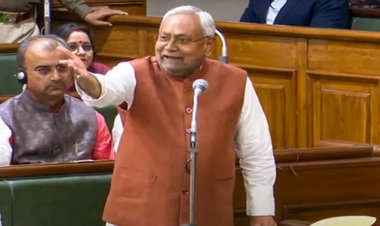Ram Mandir Dhwajarohan: Mystery and importance of Kovidar tree.
The symbol of the Kovidar tree holds special significance for the Ayodhya Ram Temple flag hoisting ceremony in 2025. Learn about the story of Bharat and Lakshman, its Ayurvedic properties, and historical context.

The flag hoisting ceremony at the Ram Temple on November 25th continues to be a topic of discussion. The tradition of hoisting a flag at a temple has always been ancient and important in Hinduism. The Garuda Purana states that a flag hoisted at a temple signifies the presence of a deity, and the entire area in which it flutters is considered sacred. This flag hoisting ceremony has brought many of India's most famous temples into the spotlight. Let's explore the flags at each temple in detail.
Ram Temple, Ayodhya
The flag hoisted at the Ram Temple not only symbolizes the devotees' unwavering faith in Lord Ram. It also bears witness to Ayodhya's great traditions, including the Suryavansh and Raghukul clan. The flag hoisted at the Ram Temple is saffron in color. The flag bears the image of the Kovidar tree, Om, and the Sun God.
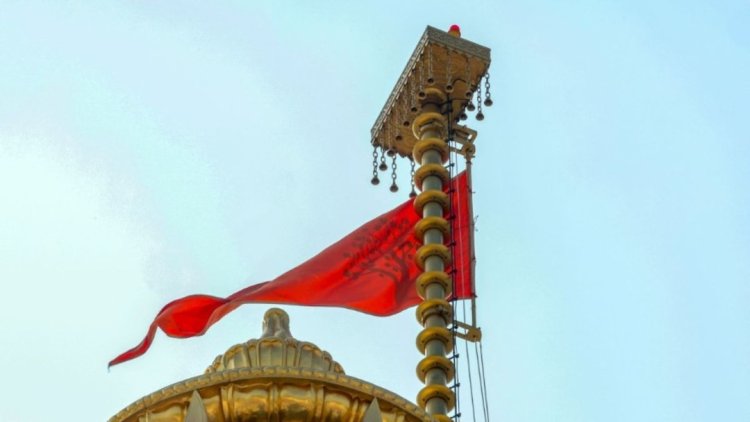
The flag will be 22 feet long and 11 feet wide. The flagstaff will be 42 feet tall. It will be hoisted at a height of 161 feet. The saffron color of this flag is believed to be linked to the eternal tradition. Saffron is considered a symbol of renunciation, sacrifice, bravery, and devotion. This color also held a special place during the reign of the Raghuvansh dynasty.
Jagannath Temple, Odisha
Today, we will first discuss the flag at the Jagannathpuri Temple in Odisha. A flag called the Patitpavan Bana flies at the Jagannath Temple in Odisha, and it is changed daily. This 20-foot triangular flag is the responsibility of a specific family (the Chola family). It is believed that those who make a wish and have devotion to God offer this flag here. It is believed that offering this flag brings great merit. Those whose wishes are fulfilled offer the flag to God.

The flag hoisting time is 5 p.m. In winter, the flag is hoisted at 4 p.m. Lakhs of devotees gather inside and outside the temple to witness the flag hoisting ceremony. Flags of three colors are offered to the deity and hoisted atop the temple.
Dwarkadhish Temple
The Dwarkadhish Temple is located in the city of Dwarka in the Indian state of Gujarat. The Dwarkadhish Temple is also known as the Jagat Mandir, where Lord Krishna is worshipped. Speaking of the flag, hoisting the flag atop the main peak of the Jagat Mandir of Lord Dwarkadhish holds special significance and tradition. Six flags are hoisted daily at the temple. Of these, two flags, at 7 a.m. and 5 p.m., are booked immediately by the District Collector, while the remaining four flags are booked at the 505 office of the local Gugli Brahmins.
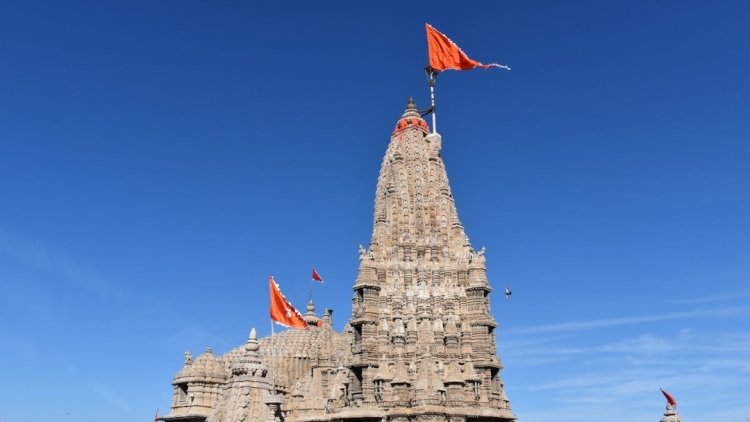
The flag hoisted at the Dwarka Jagat Mandir is 52 yards (155 feet) long. Since the time of the Gaekwad government in Dwarka, the youth of the Aboti Brahmin community of Dwarka have been hoisting it atop the 78-meter-high Jagat Mandir. The color of the flag hoisted at the Dwarka Jagat Mandir is also chosen according to the zodiac sign and constellation. Pink is flown on Mondays, yellow on Tuesdays, green on Wednesdays, saffron on Thursdays, white on Fridays, blue on Saturdays, and red on Sundays.
Trimbakeshwar Temple
The Trimbakeshwar Temple, or Jyotirlinga, is located in the eastern foothills of the Sahyadri Mountains, about 29 kilometers from Nashik district in Maharashtra. The story of the temple's flag is considered quite remarkable. Rajesh Dixit, a priest and scholar from Trimbakeshwar, explained that the temple's reconstruction began on December 26, 1755, and was completed in 1787. However, the flag was installed on the temple's summit in 1878. The flag of the Trimbakeshwar Temple is made of silver and panchdhatu. It is also plated with 40 tolas of gold. This flag was installed at the temple in 1878 and features the Nandi bull, the vehicle of Lord Shiva. The sun and moon are also engraved on it.

Bearings were also installed on this flag, allowing it to flutter in the direction of a strong wind. A brass flagpole still stands at the top of this temple. Near it is a stone statue of Lord Hanuman. It appears as if Lord Hanuman himself is holding the flag. Such flags are rarely seen.
Khatu Shyam Baba Temple
Khatu Shyam Baba is also mentioned when discussing the hoisting of flags at temples. Khatu Shyam Baba is located in the Sikar district of Rajasthan. Thousands of devotees offer flags to Baba every day. Some offer them after their wishes are fulfilled, while others bring them home after offering them to Baba. It is said that doing so dispels negative energy from the home and brings positive energy. Every day, thousands of devotees walk from Ringas to Khatu Nagari, carrying flags (nishan) in their hands, and offer them to Baba.

Kashi Vishwanath Temple
The Kashi Vishwanath Temple is also a leader in hoisting flags atop temples. Regarding the flag atop the Kashi Vishwanath Temple in Varanasi, one of the twelve Jyotirlingas, the temple's chief priest, Tek Maharaj, explained that the primary reason for placing a flag atop a temple is to symbolize the deity within the temple (devalaya) and to symbolize purity. A golden flag has been flying at Baba Vishwanath Temple since ancient times. The flag bears the Taurus trident, a symbol of Shaivism and unwavering devotion.
A Kerala court turns down a request to capture Arikomban, a wild elephant.
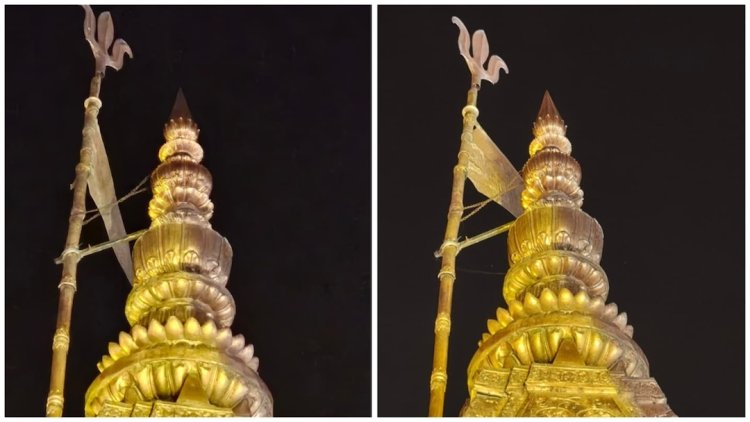
Regarding the significance of the flag, he further explained that hoisting a flag in temples signifies purity and the presence of one's deity. In addition to the Vedic Sanatan Dharma, such flags are also hoisted at places of worship of other sects to symbolize their deity. These are symbolic representations. Devotees who cannot reach their deity from afar can attain the fruit of seeing their deity simply by seeing the flag or the peak from a distance. Meanwhile, Vishwa Bhushan Mishra, Chief Executive Officer of the Vishwanath Temple, explained that the flag of Shri Kashi Vishwanath Mahadev always remains stable and can never bend. This is the reason for the metallic flag.
Kedarnath Dham
The flag is not hoisted at Kedarnath Dham. A golden urn is placed at the top of the temple. This urn is always in place. It is not taken down even when the doors are closed. However, it is cleaned. Yudhveer Pushpavan, in-charge of Kedarnath Dham, said that the ITBP is responsible for the security of Kedarnath Dham during the winter. When the doors are open, all forces are deployed there. Unlike other temples, no special flags or banners are hoisted at the Dham.
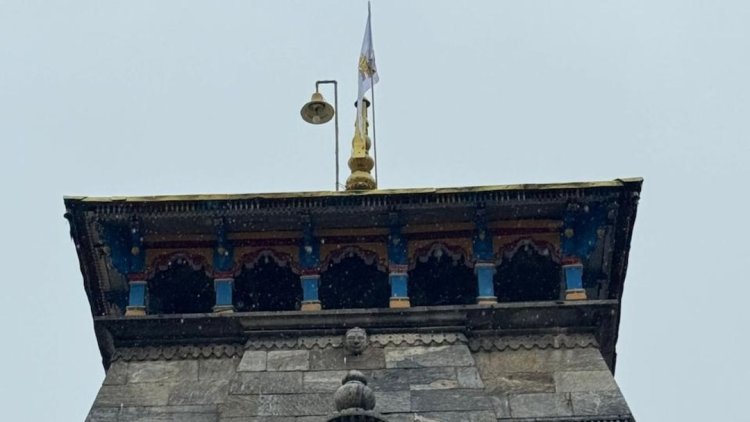
Banke Bihari Temple
No flag is hoisted on the top of the Banke Bihari Temple. One can be hoisted inside the temple premises if desired. However, it holds no special significance.









